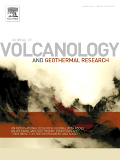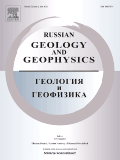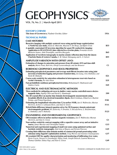
PURE AND APPLIED GEOPHYSICS
Scope & Guideline
Pioneering Insights into Earth's Processes
Introduction
Aims and Scopes
- Seismic Analysis and Monitoring:
Focus on the development and application of seismic monitoring techniques, including waveform inversion, moment tensor inversion, and machine learning approaches for earthquake source characterization. - Hydrological and Meteorological Studies:
Research on the interactions between hydrological systems and meteorological phenomena, including rainfall prediction, drought assessment, and the impact of climate change on water resources. - Geophysical Imaging and Inversion Techniques:
Development and application of advanced geophysical imaging techniques, such as electrical resistivity tomography, gravity inversion, and magnetotelluric methods, for subsurface characterization. - Natural Hazards and Risk Assessment:
Studies on natural hazards, including earthquakes, tsunamis, and landslides, with a focus on hazard assessment, risk mitigation strategies, and the analysis of historical events. - Geophysical Applications in Resource Exploration:
Application of geophysical methods in the exploration of natural resources, including minerals, hydrocarbons, and geothermal energy, utilizing innovative modeling and inversion techniques. - Environmental Geophysics:
Research addressing environmental issues through geophysical methods, including groundwater contamination studies, landfill monitoring, and the impact of climate change on geological formations.
Trending and Emerging
- Machine Learning and AI in Geophysics:
The adoption of machine learning and artificial intelligence techniques for data analysis, modeling, and prediction in geophysics is rapidly increasing, showcasing its potential to enhance the accuracy and efficiency of geophysical research. - Climate Change Impact Studies:
Research focusing on the effects of climate change on geological and hydrological processes is gaining traction, addressing urgent global challenges such as water scarcity and natural disaster preparedness. - Integrated Geophysical Monitoring Systems:
There is a growing trend towards the development of integrated monitoring systems that combine multiple geophysical methods (e.g., seismic, electromagnetic, and hydrological) for comprehensive analysis and real-time data acquisition. - Interdisciplinary Approaches to Natural Hazards:
An increase in interdisciplinary studies that combine geophysics with fields such as environmental science, meteorology, and urban planning to address the complexities of natural hazards and disaster risk reduction. - Advanced Inversion Techniques:
Emerging methods for inversion and modeling, including stochastic and Bayesian approaches, are becoming more prevalent, allowing for improved parameter estimation and uncertainty quantification.
Declining or Waning
- Traditional Geological Mapping Techniques:
There is a noted decrease in publications focusing solely on traditional geological mapping methods, as researchers increasingly adopt advanced geophysical techniques that provide more detailed subsurface information. - Static and Linear Modeling Approaches:
The trend towards more dynamic and complex modeling approaches, such as machine learning and adaptive algorithms, has led to a decline in papers utilizing static or overly simplified linear models. - Basic Seismological Studies:
There has been a reduction in the number of studies focused solely on basic seismological principles without the integration of advanced technologies or interdisciplinary approaches. - Non-Integrated Environmental Studies:
Research that does not incorporate geophysical methods into broader environmental contexts is becoming less common, as interdisciplinary studies gain prominence.
Similar Journals

Acta Geophysica
Pioneering Research for a Deeper Understanding of Earth.Acta Geophysica is a distinguished peer-reviewed journal published by Springer International Publishing AG, focusing on the dynamic field of Geophysics. With an ISSN of 1895-6572 and an E-ISSN of 1895-7455, this journal stands as a critical platform for disseminating cutting-edge research and advancements from 2006 to 2024. Acta Geophysica maintains a respectable impact factor, reflecting its contribution to the global scientific community, where it ranks in the Q2 category within Geophysics, and is positioned 55 out of 165 in Scopus' Earth and Planetary Sciences, placing it in the 66th percentile. Based in Switzerland, the journal invites submissions that address a diverse range of topics, including seismic studies, geodynamics, and climate change impacts, thereby fostering in-depth discussions and innovative solutions in geophysical research. Access to the journal's content is offered through subscription-based options, ensuring a sustainable model for high-quality scientific exchange. By connecting researchers, professionals, and students, Acta Geophysica plays a vital role in advancing the understanding of Earth's processes and contributing to the field's evolution.

JOURNAL OF VOLCANOLOGY AND GEOTHERMAL RESEARCH
Connecting Scholars to the Pulse of Earth’s EnergyWelcome to the Journal of Volcanology and Geothermal Research, a premier publication dedicated to advancing the understanding of volcanic and geothermal processes. Published by Elsevier in the Netherlands, this esteemed journal holds a distinguished Q1 ranking in both Geochemistry and Petrology and Geophysics, reflecting its influential contribution to the field. Since its inception in 1976, the journal has served as a critical platform for high-quality research, disseminating cutting-edge findings that shape the discourse surrounding Earth sciences. With an impressive Scopus ranking—27th in Geophysics and 43rd in Geochemistry and Petrology—scholars and practitioners alike regard it as an essential resource for staying informed on the latest research trends. Although it does not provide open access options, the journal remains committed to enriching the academic community's understanding of geothermal energy, volcanic hazards, and related geophysical phenomena, making it a must-read for anyone invested in these dynamic fields.

Geodynamics
Transforming Geosciences Through Open AccessGeodynamics is an emerging scholarly journal published by LVIV POLYTECHNIC NATIONAL UNIVERSITY, dedicated to advancing knowledge in the fields of Earth and Planetary Sciences, with a particular emphasis on Geophysics, Geology, and related specialties. Featuring both ISSN 1992-142X and E-ISSN 2519-2663, this journal aims to publish high-quality research that addresses critical challenges in geodynamic processes and their implications on our planet's systems. Despite its nascent status, having converged years from 2023 to 2024, Geodynamics is poised to attract attention in the academic community, especially as evidenced by its rankings in Scopus, which position it prominently within the discipline. The journal's commitment to open access ensures that cutting-edge research is readily available to the global scientific community, fostering collaboration and innovation. Researchers, professionals, and students will find Geodynamics an essential resource for the latest findings and discussions in geodynamics and related fields, making it an invaluable addition to the landscape of environmental science journals.

Exploration Geophysics
Empowering Geoscientists with Knowledge and InnovationExploration Geophysics is a prestigious journal published by Taylor & Francis Ltd., prominently focusing on the interdisciplinary fields of geology and geophysics. Established in 1970 and continuing its legacy to 2024, this journal serves as a vital platform for researchers, professionals, and students alike, disseminating cutting-edge research and innovative methodologies in earth sciences. With a robust impact factor that highlights its academic influence, and classified in the Q3 category for both geology and geophysics, it ranks among the notable publications in the field, placing it in the 51st and 50th percentiles of its respective categories. Although available through standard subscription access, the journal encourages engagement from a diverse readership aimed at exploring the intricacies of earth processes, resource exploration, and environmental evaluations. By contributing valuable insights and fostering collaborations, Exploration Geophysics continues to play a crucial role in advancing the understanding of our planet's subsurface dynamics.

Journal of Indian Geophysical Union
Advancing Knowledge in Geophysical SciencesThe Journal of Indian Geophysical Union, published by the Indian Geophysical Union (IGU), serves as a vital platform for disseminating research in the field of geophysics. With the ISSN 0257-7968, this journal primarily focuses on studies related to geophysical sciences, including but not limited to, seismicity, environmental geophysics, and geodynamics, contributing to a better understanding of the Earth's processes. The journal is committed to quality research and aims to foster a collaborative environment for researchers, professionals, and students in India and internationally. Although currently not designated as an Open Access publication, it plays an essential role in connecting academia with practical applications in geophysical research. Based in Hyderabad, India, the Journal of Indian Geophysical Union continues to be an essential resource for those seeking to expand their knowledge and engage with the latest findings in geophysics.

Geofizicheskiy Zhurnal-Geophysical Journal
Pioneering Knowledge in Seismic Studies and BeyondGeofizicheskiy Zhurnal-Geophysical Journal, published by the esteemed S I Subbotin Institute of Geophysics, National Academy of Sciences of Ukraine, stands as a vital resource for professionals and researchers in the field of geophysics. With an ISSN of 0203-3100 and an E-ISSN of 2524-1052, this journal is recognized for its rigorous peer-reviewed articles that delve into various aspects of geophysical research, including seismic studies, geodynamics, and Earth surface processes. Although currently not under an open access model, the journal maintains a commitment to disseminating high-quality research, thereby enriching the global geophysical community. The publication aims to foster collaboration and knowledge transfer among scientists and engineers while addressing complex geophysical challenges in a rapidly evolving landscape. By engaging with cutting-edge research, readers can expect to uncover insights that advance both theoretical understanding and practical applications in geophysical science.

Solid Earth
Transforming Understanding of Earth's Dynamic SystemsSolid Earth is a prestigious open-access journal published by COPERNICUS GESELLSCHAFT MBH, dedicated to advancing the understanding of geological and environmental sciences. With an ISSN of 1869-9510 and E-ISSN 1869-9529, this journal has been at the forefront of the Earth sciences since it became fully open access in 2010. Based in Göttingen, Germany, it features a rich array of interdisciplinary research relevant to earth-surface processes, geochemistry, paleontology, and geophysics, among other fields. The significance of Solid Earth is underscored by its rankings in the Q1 category across multiple related disciplines, demonstrating a strong impact factor within the community. As of 2023, it stands out with an impressive Scopus ranking, pushing the boundaries of knowledge and research excellence. By providing a platform for high-quality scientific contributions, Solid Earth is essential for researchers, professionals, and students looking to explore and disseminate impactful findings in the pursuit of sustainable earth science advancements.

JOURNAL OF SEISMIC EXPLORATION
Transforming Seismic Data into Groundbreaking DiscoveriesJOURNAL OF SEISMIC EXPLORATION, published by GEOPHYSICAL PRESS, is an esteemed academic journal specializing in the intricate fields of geochemistry and geophysics, focusing on the seismic methods of subsurface exploration. Established in 1992 and operational through 2023, this journal provides a critical platform for researchers, professionals, and students to disseminate high-quality findings related to seismic technologies, exploration techniques, and the interpretation of geophysical data. Although it currently holds a Q4 quartile ranking in both geochemistry and geophysics, the journal remains committed to fostering innovative research that advances the understanding of Earth processes. While not available in an open-access format, the journal offers professional insights and calculates its impact through its dedicated readership and contributions, thereby enhancing the ongoing dialogue in the Earth sciences community. Located in Castelnau-le-Lez, France, this journal is an essential resource for those seeking to deepen their expertise in seismic exploration and its applications.

Russian Geology and Geophysics
Exploring the Depths of Geology and GeophysicsRussian Geology and Geophysics is a seminal journal published by GEOSCIENCEWORLD that plays a pivotal role in the dissemination of vital research within the realms of Earth-Surface Processes, Geology, and Geophysics. With an ISSN of 1068-7971 and an E-ISSN of 1878-030X, this journal has witnessed a continuous evolution since its convergence in 2007 and is poised to thrive through 2024. While it is not an Open Access journal, it is recognized for its significant contributions to the academic community, holding a respectable Q2 ranking in Earth-Surface Processes and Q3 rankings in both Geology and Geophysics as of 2023. The journal’s impact factors align it within competitive quartiles, marking it as an essential resource for researchers and professionals seeking to stay at the forefront of geological and geophysical sciences. By publishing high-quality peer-reviewed articles, the journal fosters an environment of knowledge sharing and innovation, making it indispensable for students, practitioners, and scholars alike who are dedicated to advancing our understanding of Earth's complex systems.

Geophysics
Unveiling the Mysteries of Earth’s ProcessesGeophysics, published by the SOC EXPLORATION GEOPHYSICISTS - SEG, is a prestigious journal notable for its significant contributions to the fields of geophysics, geochemistry, and petrology. Since its inception in 1936, this journal has consistently provided a platform for high-quality research, maintaining a strong impact within the academic community, evidenced by its Q1 ranking in these important scientific categories for 2023. With an ISSN of 0016-8033 and an e-ISSN of 1942-2156, it features rigorous peer-reviewed articles that address the latest advancements in geophysics and related disciplines, contributing to a deeper understanding of Earth processes. Although it does not offer open access options, the journal ensures broad dissemination of knowledge and remains essential for researchers, professionals, and students dedicated to exploring energy resources and geophysical phenomena. Its Scopus rankings, including a commendable 22nd out of 165 in Earth and Planetary Sciences for Geophysics, affirm its importance and reach in the academic community. In addition to fostering scholarly discourse, Geophysics plays a critical role in advancing the practical applications of geophysical research, making it a vital resource for those engaged in exploration and environmental studies.